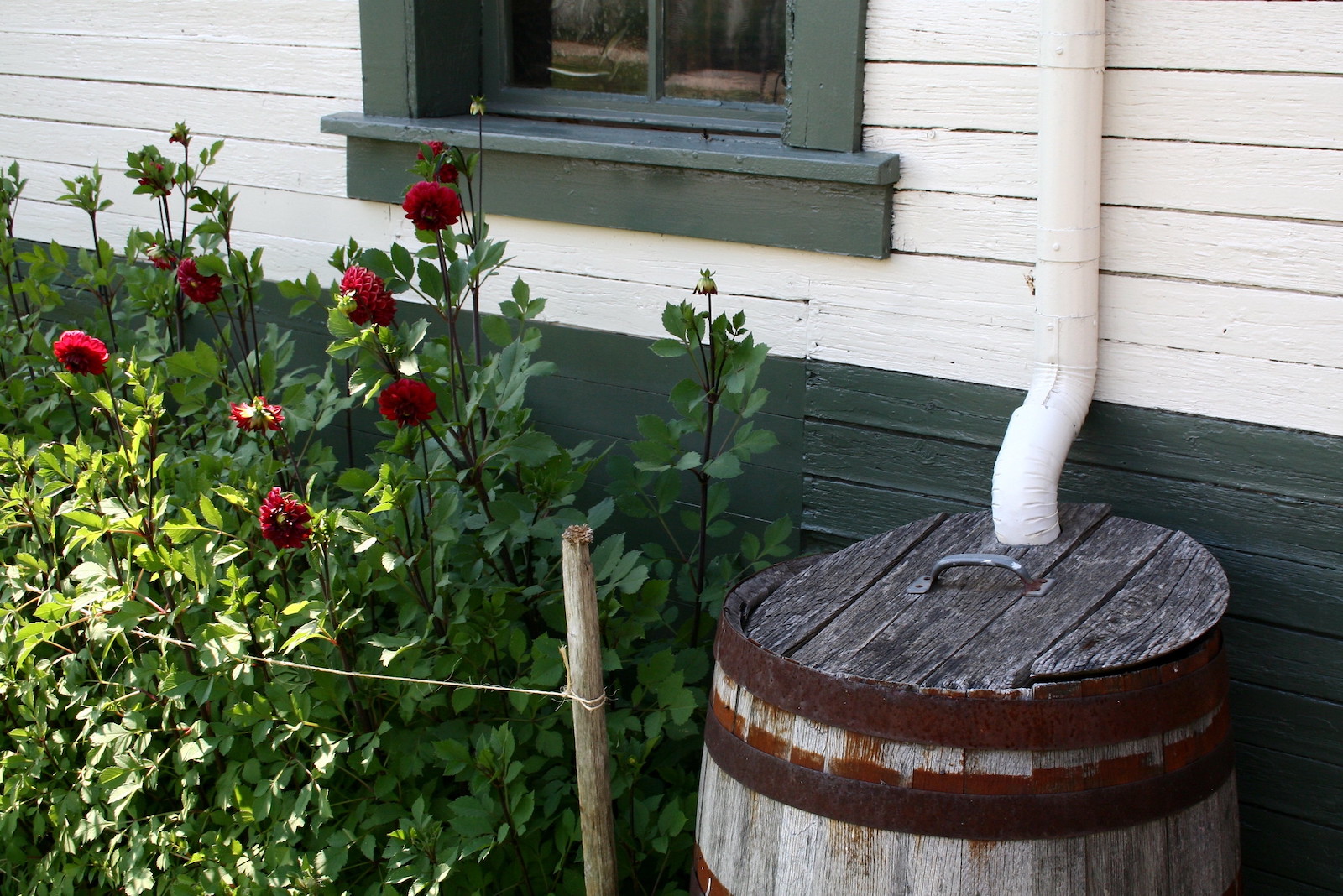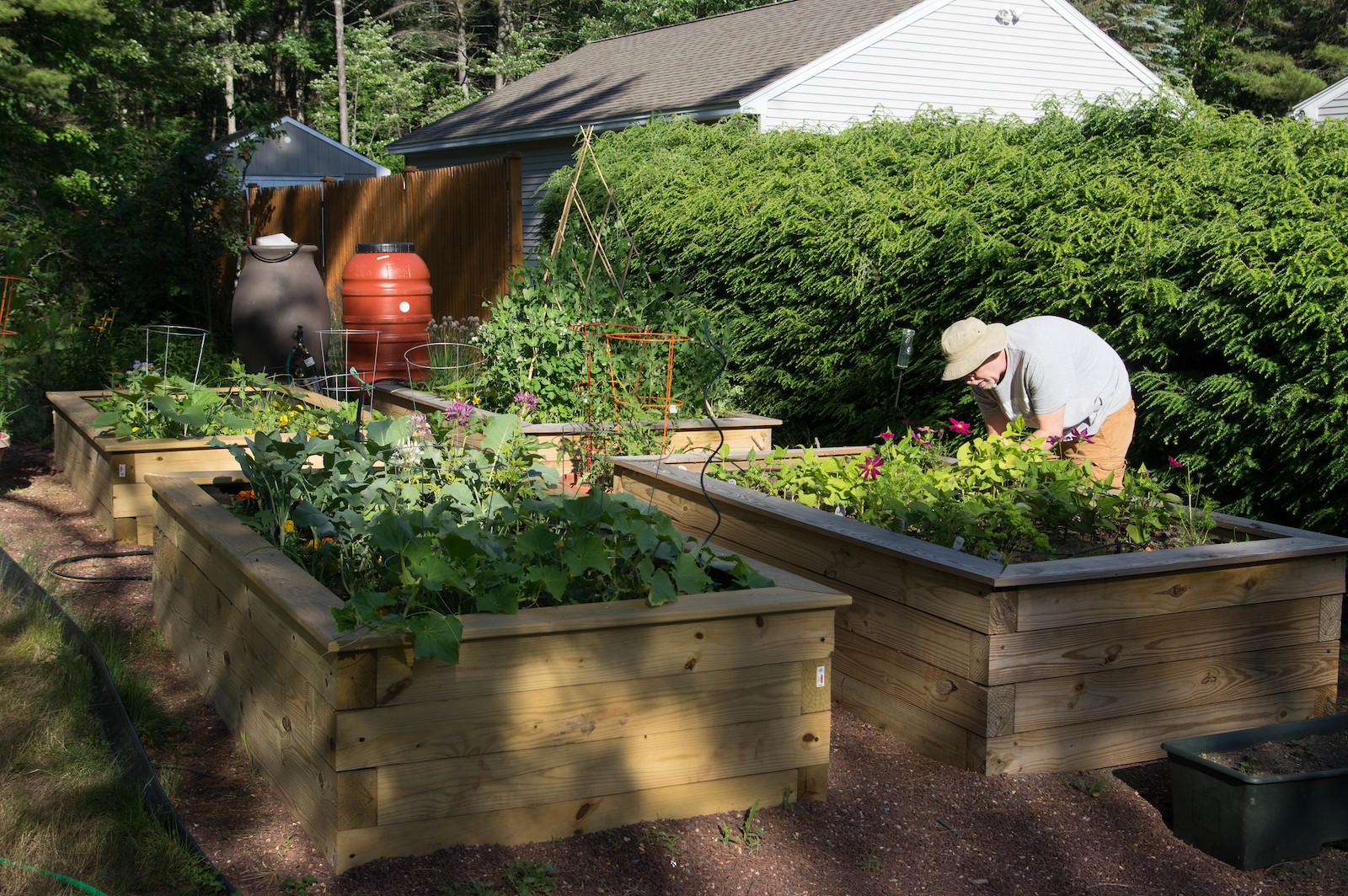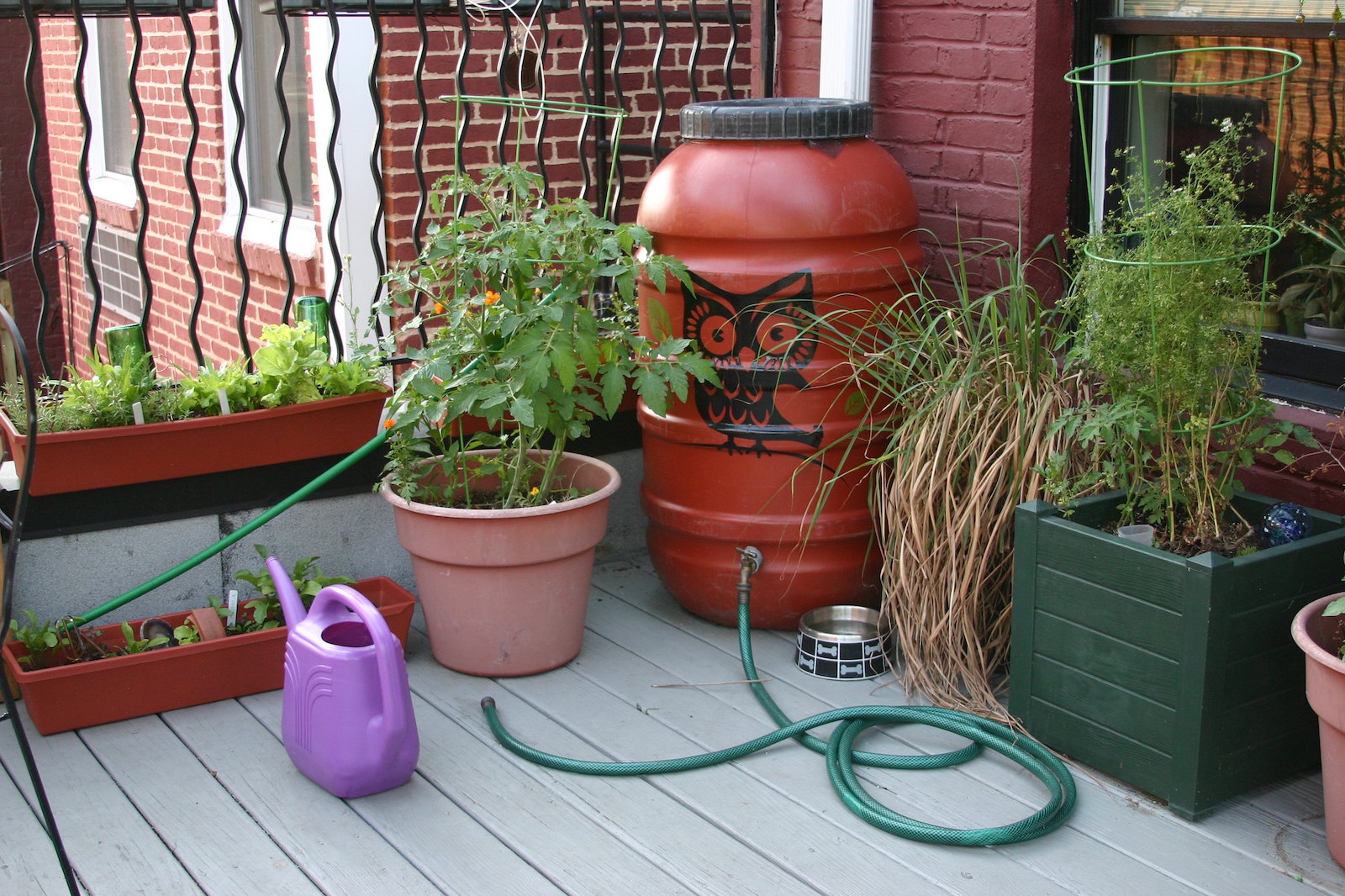A row of rain barrels in the City of St. Petersburg, Florida - Photo credit: CityofStPete
All about rainwater harvesting
Humans have been capturing rain to water their animals and crops since the dawn of agriculture. Before climate change, weather patterns may have been more predictable, but that didn’t mean that they were always compatible with crop production.
Rainwater capture helped ensure that people, animals, and plants had the water they needed between rains and in times of water scarcity and drought. Ancient civilizations built basic cisterns in Neolithic times, and later developed more complex methods for collecting and moving water, such as in Crete and the Roman Empire.
Today, rainwater harvesting can take many forms, and in the U.S., generally takes place at the household level. While some people may opt for complex systems that filter and purify rainwater and make it safe for drinking, most get started with a simple and effective and cheap technology: the rain barrel.
A rain barrel is exactly what it sounds like: a barrel with some basic modifications that make it handy for capturing the water that falls from the sky and runs off your roof. These barrels are easy to build or install yourself at little cost.

Flowers thrive next to a rustic rain barrel - Photo credit: heat13her
Reducing runoff, increasing resilience
Rainwater collection can reduce stormwater runoff and pollution. In areas with lots of impermeable surfaces, like sidewalks, driveways, roads, and parking lots, rainwater can’t seep back into the earth to replenish groundwater. Instead it is diverted toward storm sewers or streams, picking up pollutants along the way, causing flooding, and eroding stream banks. According to the United States Environmental Protection Agency, “Polluted runoff is one of the greatest threats to clean water in the U.S.” By harvesting rainwater, we can reduce the amount of runoff and put that water to good use.
Rainwater harvesting ensures households and communities have access to water for food production. This practice is widespread in areas like India, Bangladesh, Brazil, and Egypt. In one study, rainwater harvesting was found to potentially double yields in Sub-Saharan Africa. In the United States, many communities face water shortages. Investing now in rainwater harvesting is one way to ensure our future resilience by keeping gardens growing and food security strong.

A woman works in her vegetable and flower garden maintained in part by water from the rain barrels visible in the image. - Photo credit: Samantha Forsberg
How to install and care for your rain barrel
Rain barrels can be purchased in a wide variety of looks and feels at a range of price points. Alternatively, you can build your own out of any clean plastic barrel - even a garbage can. Many barrels are designed to be set up right under your gutter downspout so the water caught on your roof is directed straight into the barrel. If you don’t have gutters, you can position your barrel below a catchment area in your roof where the water naturally runs off, or use other alternative solutions like collecting water with a tarp or building diverter pipes.
Regardless of what kind of rain barrel you opt for, make sure that you have it fitted with a mesh screen to keep out debris, small animals, and mosquitos. Use the water regularly (about every two weeks) to prevent overflow, stop mosquitos from breeding, and keep your barrel from developing algae and bacteria that makes the water stinky and stagnant.
There are also different options for managing overflow, including installing hoses that divert any overflow away from your home’s foundation. Regular cleaning with vinegar or baking soda, using a dark food-grade barrel, and keeping it out of sunlight will also help prevent algae and bacteria growth, as will keeping your gutters clean of debris.

You don’t need a lot of space for a rain barrel! This container garden is sustained by a rain barrel on an apartment balcony. - Photo credit: barb howe
A word of caution
The water that comes from a basic rain barrel set-up will not be suitable for consumption and should never be used for drinking water, cooking, or washing. In large part, this is because the water may pick up dirt, bacteria, and other contaminants when it runs off your roof or once it enters your barrel. More sophisticated systems for water collection and filtration may be used to make the water suitable to drink.
Given this, there are also many words of caution out there for using rain barrel water to water your veggie garden. The CDC does not recommend the practice, nor does the University of Minnesota Extension, but other research suggests that doing so may be safe. Overall, the research is minimal, as the risk is highly dependent upon your roof materials, and the presence of other potential contaminants such as fecal matter from birds.
So what is it good for?
If you do choose to use rain barrel water for your veggie garden, think risk mitigation. Keep the barrel clean, and make sure the water does not come into contact with the leafy parts of vegetables. Drip irrigation systems can help with this. Make sure you clean your vegetables well before eating them. Rutgers suggests sterilizing the water with bleach.
The most risk-free use of rain barrel water is watering your lawn and non-edible plants - perhaps your pollinator garden. Regardless of where you decide to use this free natural resource, you’ll be saving money and reducing runoff. So attach a hose to the rain barrel’s spigot, or simply fill up your watering can and water away!
